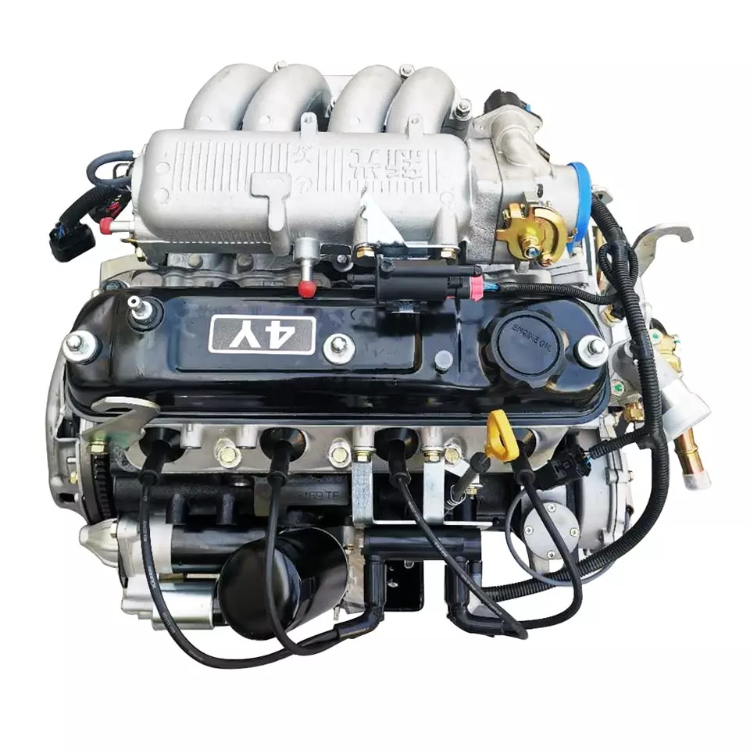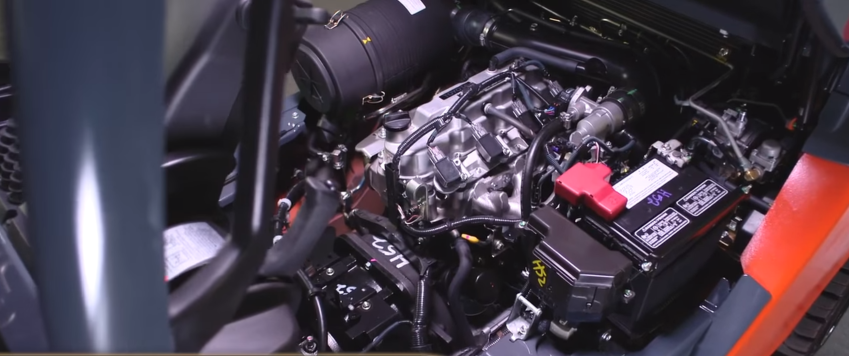The Best Maintenance Tips for Maximizing the Lifespan of Your 4Y Engine
The Best Maintenance Tips for Maximizing the Lifespan of Your 4Y Engine
Blog Article
Why the Engine Is the most effective Choice for Efficiency and Efficiency in Your Car
The engine stays a crucial part in automotive design, mainly due to its considerable impact on both efficiency and performance. As improvements in modern technology enable smaller engines to deliver remarkable power while optimizing fuel economy, the combination of functions such as turbocharging and crossbreed systems comes to be increasingly vital.
Understanding Engine Kind
Recognizing the numerous sorts of engines is critical for maximizing efficiency and effectiveness in automobile layout. The main engine types include internal burning engines (ICE), electrical engines, and crossbreed systems, each offering distinct benefits and limitations.
Interior burning engines, which can be additional categorized into fuel and diesel versions, rely upon the burning of fuel to generate power. Fuel engines commonly supply higher RPMs and better velocity, while diesel engines are understood for their torque and gas efficiency, making them optimal for heavy-duty applications.
Electric engines, on the various other hand, use electric motors powered by batteries or gas cells. They use instant torque delivery, causing smooth velocity and lower exhausts. The effectiveness of electric engines is dramatically more than that of ICEs, making them a popular selection for eco-conscious customers.
Crossbreed systems combine both inner combustion and electrical engines, leveraging the staminas of both modern technologies. They enhance fuel usage by utilizing electric power at reduced speeds and changing to gasoline or diesel for higher rates or much heavier lots.
Choosing the appropriate engine type is crucial for achieving preferred efficiency metrics and ecological sustainability in modern auto engineering.
The Influence of Engine Size
Engine dimension often plays a crucial role in establishing a vehicle's efficiency and effectiveness. Generally determined in litres or cubic centimeters, engine size directly affects the power result and torque qualities of an automobile. Bigger engines commonly create even more horsepower, allowing higher velocity and greater full throttle. This is especially advantageous in applications calling for robust performance, such as cars and durable vehicles.
Nevertheless, enhanced engine size usually associates with decreased fuel performance. Smaller sized engines can provide sufficient performance for everyday driving while advertising much better efficiency, making them a preferred option in mid-size and portable automobiles.
Additionally, advancements in engine layout, such as turbocharging and direct gas injection, allow smaller sized engines to achieve power degrees similar to their bigger equivalents. This fad highlights the importance of not exclusively focusing on engine dimension but additionally thinking about total car design and technology (4y engine). Eventually, the impact of engine size on efficiency and effectiveness emphasizes the requirement for customers to evaluate their specific driving demands and preferences when choosing a lorry
Advanced Engine Technologies
Advancements in engine modern technologies have significantly improved the landscape of auto performance and performance, structure upon the foundational ideas developed by engine dimension. Notably, improvements such as turbocharging and straight gas shot have actually enabled smaller engines to deliver power levels formerly linked with bigger equivalents. Turbochargers press air entering the engine, allowing for enhanced power check this site out outcome without a matching boost in engine dimension, while direct injection enhances fuel shipment, improving combustion effectiveness.
Furthermore, variable shutoff timing systems have become a critical technology, allowing engines to change shutoff procedure based upon driving conditions. This versatility enhances both performance throughout velocity and gas performance throughout travelling. Hybrid and electric engine technologies even more illustrate the change in auto design, incorporating typical inner burning engines with electric motors to make best use of performance while minimizing discharges.
Additionally, advancements in materials scientific research have resulted in lighter, more sturdy engine parts, additionally enhancing efficiency and durability. The integration of sophisticated electronics and engine control devices likewise enables real-time changes, making sure ideal efficiency across various problems. Collectively, these advanced engine technologies not just improve lorry performance yet likewise contribute to a much more lasting vehicle future, showing the continuous evolution of engine style.
Balancing Power and Effectiveness
Striking a balance in between power and efficiency is vital in modern auto design as producers look for to satisfy significantly strict exhausts policies while pleasing customer demand for efficiency (4y visit this site engine). The obstacle lies in optimizing engine features to deliver robust power result without sacrificing fuel economic situation
To achieve this balance, designers use different strategies, such as turbocharging, which enhances engine power forcibly in even more air, enabling a smaller engine variation that boosts fuel efficiency. Variable valve timing modern technologies additionally play a considerable function, enabling engines to readjust their efficiency features based on driving problems, thereby improving both power and effectiveness.
Additionally, improvements in products and making techniques have resulted in lighter engine go to this website elements, which decrease general automobile weight and enhance gas performance without compromising power. Hybrid technologies have also emerged as a viable service, combining conventional internal combustion engines with electric powertrains to provide a boost in efficiency while keeping reduced discharges.

Future Fads in Engine Style

Moreover, the development of innovative materials, such as light-weight composites and high-strength alloys, is readied to change engine elements. These products not only minimize weight yet likewise boost thermal effectiveness, thus maximizing performance. Furthermore, suppliers are exploring variable compression proportions, permitting engines to adapt to different driving problems, enhancing both power outcome and gas economy.
Additionally, the increase of fabricated intelligence and artificial intelligence in engine design is allowing anticipating upkeep and real-time performance optimization. This technology can cause engines that self-adjust for optimal efficiency based on driving patterns.

Conclusion
Finally, the engine works as a critical component in achieving optimal performance and effectiveness in contemporary automobiles. Advanced modern technologies, such as turbocharging and crossbreed systems, boost power result while reducing gas usage and discharges. The interaction in between engine size and style continues to develop, driving advancements that balance exciting performance with environmental sustainability. As automobile engineering progresses, the emphasis on creating efficient, effective engines will certainly stay vital fit the future of transportation.
Additionally, advancements in engine layout, such as turbocharging and direct fuel shot, allow smaller engines to accomplish power levels comparable to their larger equivalents.Developments in engine technologies have actually dramatically improved the landscape of automotive efficiency and performance, structure upon the foundational ideas developed by engine size. Turbochargers press air getting in the engine, allowing for raised power outcome without a corresponding rise in engine size, while straight shot optimizes gas delivery, boosting burning efficiency.
Crossbreed and electric engine modern technologies even more highlight the shift in vehicle design, incorporating traditional inner combustion engines with electrical motors to take full advantage of efficiency while minimizing exhausts.
Collectively, these sophisticated engine technologies not only boost vehicle performance yet also contribute to an extra sustainable auto future, demonstrating the continuous advancement of engine design. (4y engine)
Report this page